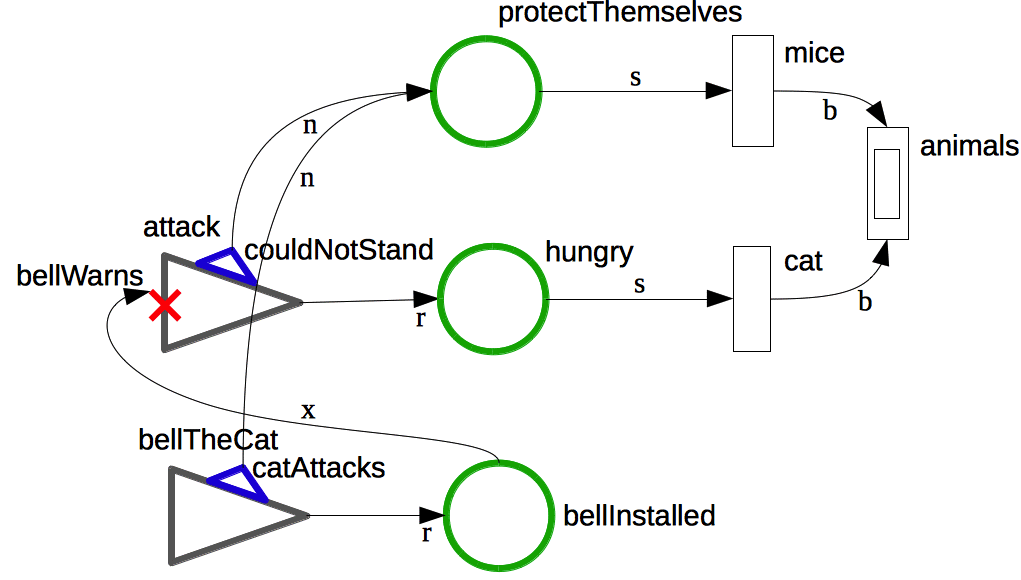Difference between revisions of "The Mice in Council"
From IDSwiki
(→Comments) |
(→Dramatic Cycles) |
||
| Line 9: | Line 9: | ||
* ((attack,hungry,cat,animals),(attack,couldNotStand,protectThemselves,mice,animals)) | * ((attack,hungry,cat,animals),(attack,couldNotStand,protectThemselves,mice,animals)) | ||
The cat's attacks are good for the cat, but bad for the mice. | The cat's attacks are good for the cat, but bad for the mice. | ||
| − | * ((bellTheCat,bellInstalled,bellWarns,attack,couldNotStand,protectThemselves),(bellTheCat, | + | * ((bellTheCat,bellInstalled,bellWarns,attack,couldNotStand,protectThemselves),(bellTheCat,catAttacks,protectThemselve)) |
Belling the cat warns the mice when the cat attacks and therefore protect them. But belling the cat will itself provoke an attack from the cat and will not make mice safer. | Belling the cat warns the mice when the cat attacks and therefore protect them. But belling the cat will itself provoke an attack from the cat and will not make mice safer. | ||
Latest revision as of 11:32, 27 April 2016
Aesop's Fables - 6. The Mice in Council
- The Aesop's fables dramatic structures -
This page is part of a computational narratology project
Contents
Text
Structure
Dramatic Cycles
- ((attack,hungry,cat,animals),(attack,couldNotStand,protectThemselves,mice,animals))
The cat's attacks are good for the cat, but bad for the mice.
- ((bellTheCat,bellInstalled,bellWarns,attack,couldNotStand,protectThemselves),(bellTheCat,catAttacks,protectThemselve))
Belling the cat warns the mice when the cat attacks and therefore protect them. But belling the cat will itself provoke an attack from the cat and will not make mice safer.
Comments
The analysis does not cover the contrast between the collective threat (recurrent attacks from the cat) and the individual threat (when installing the bell).
